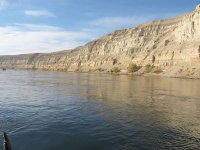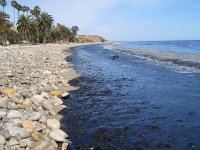How do we respond and restore?
NOAA helps to protect, evaluate, and restore marine, river, and coastal resources injured by hazardous releases. After contamination occurs, we can take several key actions:
- Provide technical support to cleanup agencies. NOAA scientists, working with the U.S. Environmental Protection Agency, the U.S. Coast Guard, and other response agencies, give technical advice to protect natural resources during cleanup efforts at coastal hazardous waste and spill sites. They advise on the most effective methods to minimize residual contamination and prevent or address impacts to resources and habitats. Their input helps guide cleanup decisions and promotes accelerated recovery of resources.
- Coordinate and conduct Natural Resource Damage AssessmentsInvestigations performed by trustees to identify injuries to natural resources caused by oil spills, hazardous substance releases, and grounding incidents in National Marine Sanctuaries, and plan restoration activities. The goal of NRDA is to restore natural resources and compensate the public for lost recreational use..
- Oversee implementation of restoration projects and monitor their effectiveness





